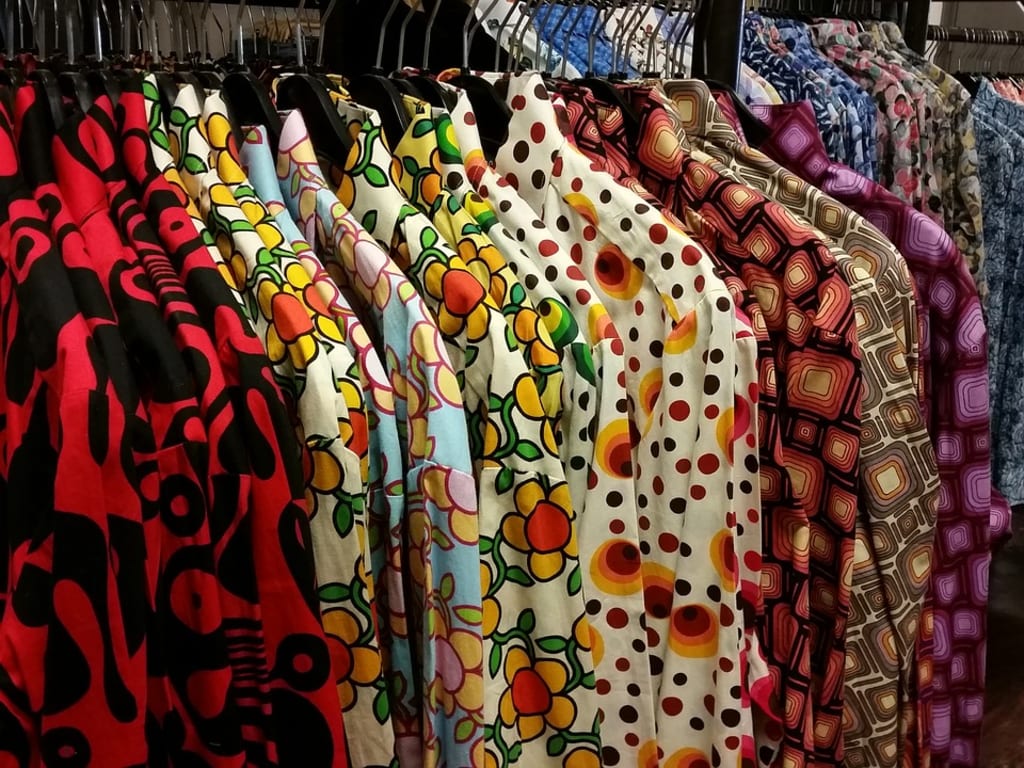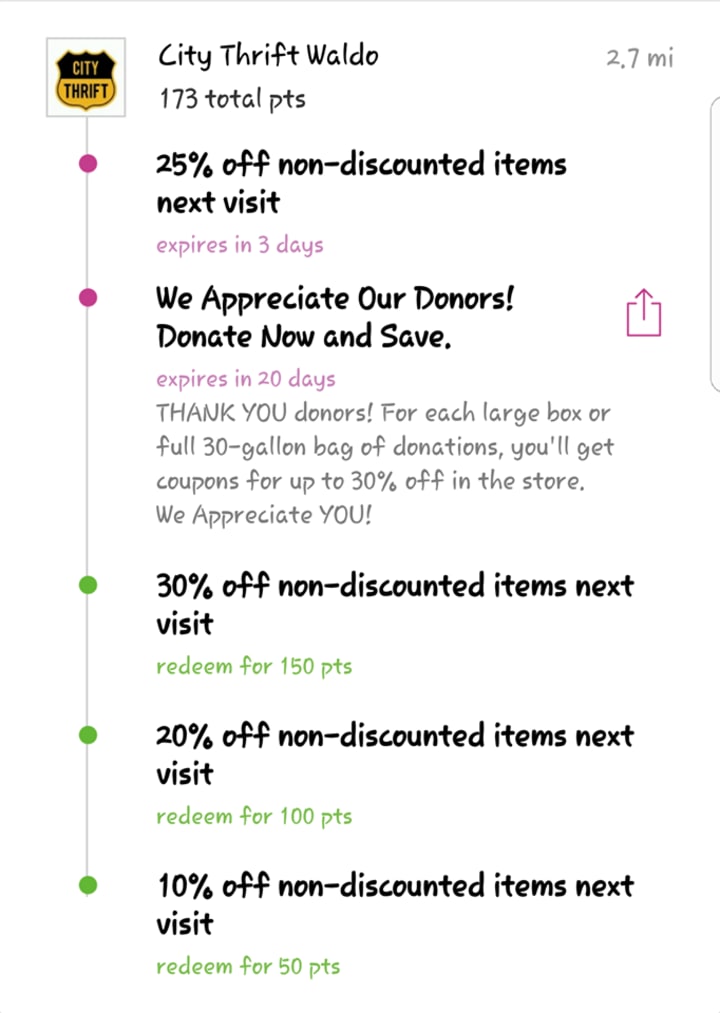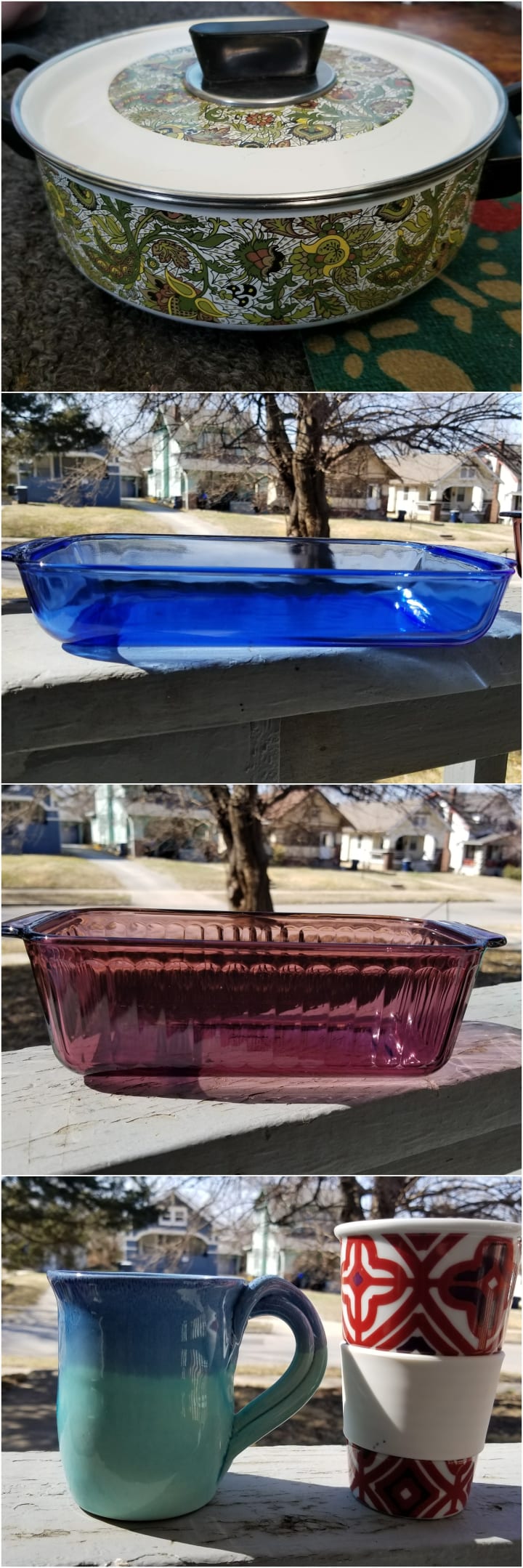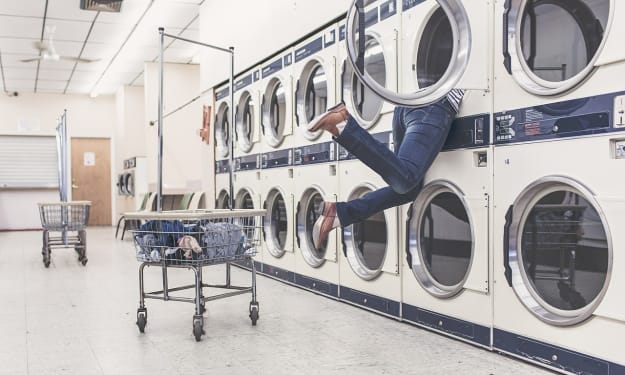Ain't No Shame to My Thrift Game
Getting the Most out of Thrift Stores

Once upon a time, it was shameful to shop in a thrift store. Having to wear other people's closet rejects after they wore them out to threadbare rags, or wearing the clothes of someone that had died, was embarrassing and a clear sign that you or your family was poor.
These days, it's kitschy to go to the thrift store. Pinterest has rebranded thrift stores into mainstream acceptance and you'll run into lots of people that saw something online and think they can recreate it and turn it around for a profit at an 800% markup. I'm not going to lie, those people mildly annoy me mostly because they turn their noses up at people like me that have to shop at a thrift store and they snatch up all the good stuff with the intention of reselling it on Etsy.
If you've been in and out of thrift shops your whole life, like me, then you've likely noticed the prices have skyrocketed in the last 20 years. I used to get an entire outfit for $5, now I'm paying fast fashion prices for used clothes that'll end up costing me $25 for an outfit. So, for folks like me that rely on thrift stores to stretch your dollars, here's some tips.
Local or National Chain?
Some charities have expanded to national levels and have thrift stores in every city; Salvation Army, Goodwill, DAV, Savers, Arizona Trading Company, etc. While it may be instinctual to make these your go-to stores, they are not always the best choice for saving money.
Check out locally run thrift shops first. Often, they curb costs because they distribute locally or put donations out directly into the shop. Nationally known thrift shops have giant distribution centers all over and can end up sending things across state lines. This cost is added onto the price tag, turning a $5 pair of jeans into a $15 pair of jeans.
Location, Location, Location...
To be sure you're going to get some quality goods on the shelves of your store, look at the neighborhoods it sits close to. Thrift stores close to well-to-do neighborhoods are going to be the most likely to have name brands and many new-with-tags items. This also means the quality is likely to be better. Some items you don't want to compromise quality on, like winter coats. You'll want to go where the people that can afford the best are most likely to donate when their coats no longer fit.
Technology is your friend.

Thanks to the major advancements that have made technology accessible for nearly everyone, even thrifters can benefit. Some thrift stores have begun implementing rewards programs with apps like Fivestars. In my awesome city of Kansas City, I know Red Racks and City Thrift both use this app. It's free to use for the consumer, and if you download it, you can see what stores use it too. To sign up in the store, you'll enter your cell number into the system and, through the app, it'll track your rewards points as well as notify you of upcoming sales. (Sidebar: this app let me know when my favorite thrift store was having a sale of 90% off all winter items. I got a sweater for 90-cents, and two pashmina scarves for 20-cents each.)
In addition to using apps to give frequent shoppers rewards, many thrift stores also have a Facebook page or website. Follow them! They'll post when they're having awesome sales like"$1 t-shirt day" or "75% off all blue tags on Thursdays."
To thrift or not to thrift...is that dollar worth it?

Top to bottom: Enamel pot (1970s), blue Pyrex casserole dish (1980s), cranberry Pyrex casserole dish (1970s), a handmade mug and a cute mug.
It's really easy to get caught up in the excitement of saving money. That's why apps like Wish take off. "What? A smartwatch for $13? The one I wanted was $150!"
However, not everything is worth buying secondhand. So, let's look at what you should buy secondhand, and what you shop pop the cash for brand new.
Kitchen Goods
You can reasonably stock an entire kitchen at the thrift store. It's a great place to go if you're just starting out on your own, or if you just need something different for your serve-ware.
- Dishes. You can generally get your basic dishes for anywhere between $0.50-$1.99 per piece. Some may be really nice China, some may be a bit more "plain Jane," and then there will be the occasional one-of-a-kind pieces that are super awesome and you have to have them. You will likely be able to find at least a few pieces that match, if that sort of thing is important to you. I usually see some monster set lying around. Some more well-to-do folks will lose the occasional piece here and there and then want to update their pattern after a decade or two, so they'll just donate their entire set and start over with new...or someone died and their family didn't want to keep the dishes.
- Glass bake-ware. There's nothing quite like the thrill of finding a piece of vintage Pyrex...if you're into that sort of thing. (I love my vintage color Pyrex.) There will be glass casserole dishes galore. I suggest trying to stick with Pyrex and carefully inspect it for chips and scratches. Pyrex is awesome because it's tempered glass. Chips and scratches weaken it and make it potentially dangerous to use in an oven, so do inspect with some scrutiny.
- Metal cookware. There will be lots of pots, pans, and bundt cake molds. (So many bundt cake pans...) Some will be winners and some won't. Secondhand cookware is totally okay, but be sure to give a look over for scratches or rust. Vintage enamel cookware is some of the best to find because it's durable and often well cared for.
- Things to approach with caution: any glassware that has a rubber valve or gasket and anything that plugs in. This includes ceramic canisters, mason jars, or pop-top bottles. Mason jars need new flat tops every time you use them (for their actual canning purposes). These rubber parts can absorb germs or dry out and be ineffective. However, you can always buy these rubber parts online and simply replace them. It breathes some fresh life into old pieces and makes them properly functional. Most of these pieces come in standard sizes and you can find them online for about $1. Things that plug in are also potentially dangerous. If you know about replacing electrical cords yourself (or know someone else that does), then you're probably okay. The thing about electrical things is that people usually only replace them when they stop working well or when they become obsolete. A lot of people think their vacuum is broken when it just needs a new belt. Basically, look the item over carefully and maybe do a quick check to see if there's a recall notice for the item.
- Things to avoid: Tupperware or anything plastic, as well as wooden dishes. Plastic is porous and can absorb and breed germs, especially if they were kept in the fridge too long and mold grew inside them. Some glassware comes with plastic lids. You can probably replace the lids online if you know the manufacturer (Pyrex is always branded, which is why I like them so much). Buy your plastic storage or plastic cooking utensils new instead of used. Also, avoid wooden dishes and cutting boards for the same reasons. You don't know how the previous owner took care of their things.
Clothes
Usually the first thing people think of when they think of thrift stores, clothes are absolutely worth buying secondhand, but not all of them.
- Look at the brands. You probably have a good idea of the price range of most of them. Fast fashion items are usually going to cost the same amount secondhand as they did when they were brand new. Thrift stores typically operate on generalized, universal pricing by piece type and condition of the piece. Name brand and fast fashion will cost the same when they are in the same condition. Go for the name brand when you can. Sometimes the fast fashion brands are just super cute and if you get it on a killer sale, it's no big loss. If you've never heard of the brand, don't be afraid to do a quick google search on your phone to find out; it only takes a moment. Look out for sizing differences. Many clothes shrink when washed, so don't solely rely on the size listed on the tag. Try the clothes on.
- Shoes. Yeah, shoes are totally worth buying secondhand under the right conditions. Well, under one condition. Only buy them if they are clearly brand new. If they don't have tags, check the soles and inside for wear. It doesn't take much for shoes to show that they've been worn outside, so you'll figure that out really quickly.
- Sweaters. Cozy, knit sweaters made from real wool are super expensive. Keep an eye out for these. Instead of paying $50+ for a wool sweater, you can get one secondhand for $10 or less. Personally, I think they're one of the best things to buy when shopping for secondhand clothes. Look out for missing pieces like buttons or belts.
- Fabric scarves. These are always in fashion and can cost $15+ brand new. At a thrift store, you can buy them for around $0.99-$4.99. Huge savings! Lots of these get donated because people don't wear them as often as they thought they would or because they just don't like the pattern/color anymore. Do be sure to look out for stains, tears, or snags.
- Purses. I can't tell you how many amazing purse and handbag finds I've encountered in a thrift store. I've gotten nearly new leather bags that cost $100 brand new for as little as $4. I generally avoid this area of a thrift store unless I'm in the market for a new bag simply because I always end up with four or five new purses. Check inside lining, handles and straps, zippers, and the bottom of the bag. If it's had a rough life, you'll know. Keep in mind some small staining and loose stitching can be repaired. If you're not sure what you've got in your hand, google the brand for a price reference.
- Avoid: bras, leggings, athletic bottoms, pajama bottoms.
- Those are clothing types that are in very close proximity to very personal areas of the body. They get a lot of wear and body fluids. The only time it's okay to buy them is if they still have the tags on them.
Home decor
You can find tons of picture frames, mirrors, shelves, baskets, vases, decorative boxes, and a million other random things. With some imagination, these are going to be the best thing ever when you need them. However, it helps to be flexible on their initial appearance. A coat of paint can change things drastically. I bought an ugly mirror for $5, spray painted the frame a shiny black, and hung it in my bedroom. It looks great with my black canopy bed and I always get compliments on it. Don't waste money on new items that cost an arm and a leg when thrift stores are just waiting to unload the very things you're shopping for. Seriously, there's always a wall of baskets in almost every thrift store. Some stores won't accept them anymore because they have so many of them. They're dirt cheap.
What to Never, Ever Buy
Never get plush things like soft toys, pillows, comforters, mattresses, and you should probably avoid plush furniture like couches and such. (Hard furniture, like shelves and tables are okay.) Bed bugs are very real. These things cannot be put into a washer or dryer and you don't want to bring unwanted guests into your home. Thin, washable things like lightweight blankets and sheets are okay because you can wash them in hot water and put them in the dryer, however, they need to be looked at with a lot of scrutiny. People are gross as a rule.
There's so many other items that didn't make it into my list. You can find almost anything in a thrift store. Many of these rules apply to anything else you may encounter and be tempted to buy, like children's toys (worth it by the way, just no stuffed animals). The number one rule is to always inspect what you're thinking of buying.
Thrifting is a great way to stretch dollars and it's even great for the environment. No matter your station in life, there's probably a great reason to shop there. If you are a person of means that doesn't need to shop there, do keep in mind that it isn't a choice for many people and be respectful. If you're looking to get rid of some of your things and think they could be given new life with someone else, try to be mindful of what you donate. Don't give things that are broken or missing parts. What good is a board game with no pieces? Or a microwave that stopped working? Or a complete set of coffee mugs that all have their handles broken off? Also, since many thrift stores are run by charities, try to keep your donations local to support the charities in your community.
Now get out there and make the most of your thrift game! Happy hunting!
About the Creator
Diane Nivens
Just trying to find my place in this big world. I've got a lot to say if you've got the time to listen.
Twitter: @DianeNivens87






Comments
There are no comments for this story
Be the first to respond and start the conversation.